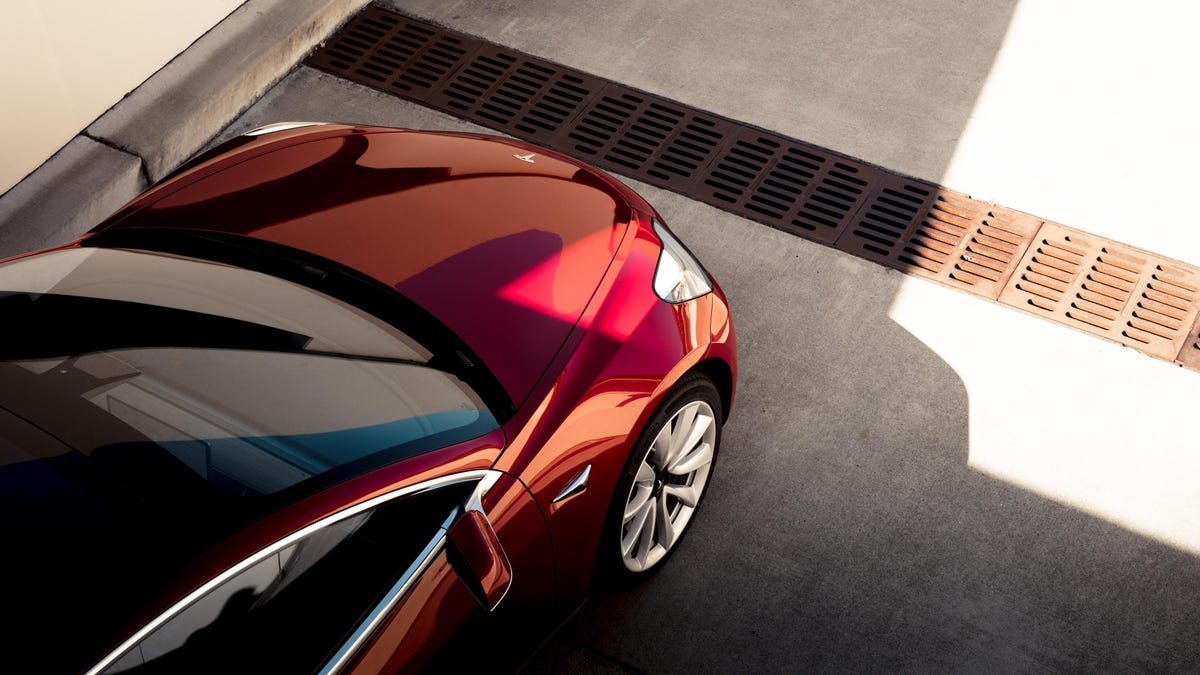Tesla's Model 3 marketing strategy ditches specs for end results
Looking for horsepower output or battery capacity? You're going to be looking for a long time.

When I did a by-the-numbers comparison of the Tesla Model 3 and the Chevrolet Bolt EV, I noted that Tesla had not yet released several key Model 3 specs. Now, it appears those numbers may never arrive.
In the event you've been under a rock for a few years, Tesla enjoys doing things a bit differently. That includes its marketing strategy. And for the Model 3, that strategy includes not publishing certain figures, including the horsepower and torque output of the electric motor, as well as the battery's overall capacity as measured in kilowatt-hours.
A Tesla spokesperson confirmed this, saying in an email that the company "is focusing on range rather than capacity, since kWh isn't an intuitive measurement for many people."
Want to know how much torque the Model 3's electric motors produce? So would I.
This is definitely a unique marketing strategy. The industry that spawned an era called the Horsepower Wars has a rich history of giving consumers as many numbers as possible. Tesla's decision to hide the sausage-making process can be viewed as both a good and a bad thing, depending on what you're after.
On the positive side, those numbers don't technically matter. Buyers aren't shopping for an EV with a battery no smaller than 60 kWh -- they want a range in excess of 200 miles. It's all about what matters to the buyer, and that's range and acceleration. Are they good enough? Then who cares about the actual figures?
On the other hand, these numbers are useful for comparison's sake, and not including them makes it slightly more difficult to compare vehicles on paper. Tesla's assumption that buyers only care about the end-result paints consumers with too broad a brush -- certainly, the higher-HHI segment that Tesla originally catered to understands what these numbers are, and they might want to know what those numbers are for this car.
There's also the matter of measuring efficiency. Two batteries with the same capacity, but with wildly different ranges on similar cars may mean one battery is more efficient than another. But without that actual capacity figure, it's more difficult to figure out whether or not a battery is as efficient as its competitors' offerings.
While there may not be precedent for this in the automotive industry, it's already been done in the tech industry, with which Tesla's choices are more aligned. Intel hasn't marketed its chips using clock speed in a long time, and while touting additional megahertz (or gigahertz, eventually) might give a marketing advantage, it doesn't mean much to the average end-user. Heck, higher clock speeds don't even guarantee higher performance -- there's even a Wikipedia entry that explains the concept.
Tradition goes a long way in the automotive industry, so it's unlikely that Tesla's strategy will become an industry-wide move. There's also still the chance that, down the road, Tesla might release some of these figures. Nevertheless, it's yet another way in which Tesla wants to do things differently, and it'll be interesting to see how (or if) the market reacts.
In the meantime, if anyone has a Model 3 and would like a date with a dyno, shoot us an email so we can publish the numbers that Tesla won't (for now).

